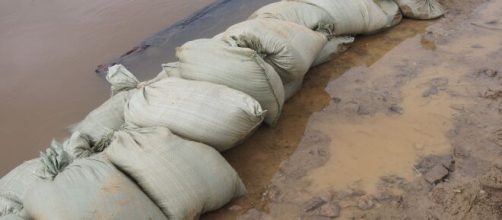Earth's weather is becoming warmer because of man-made greenhouse gas emissions. This artificial system is not letting the warmth of the sun evacuate the earth's atmosphere. This is causing a rise in the overall temperature of the earth's atmosphere. It is making floods and intense heat waves become more frequent than anytime in history. About 70% of the earth's surface is covered by the ocean. The more the ocean heats up, the more the water evaporates. This builds up storms in the cloud which cause heavy rainfall.
Floods in South Asia
Climate change has a drastic impact on monsoon rains in South Asia.
Global warming is causing unpredictable monsoon storms and destructive deluges in this region. Heavy rainfall in June and July has caused catastrophic flooding in Pakistan. From Northern Pakistan to Sindh and Balochistan, flooding has swamped houses and damaged crops and cattle. Over 33 million people have been affected by this devastating flood.
Disastrous floods hit India and Bangladesh after a monsoon rain in May 2022. It was one of the worst floods in the region, which left millions of people devastated. Excessive rainfall and land sliding events were observed in Nepal during a monsoon spell which demolished houses and dislocated many people.
A similar extreme weather event occurred in Northern Afghanistan that has caused severe damage to the infrastructure of the country.
In August, flash flooding hit the central province of Sri Lanka which has affected over 15000 people till now.
These extreme weather events are happening more frequently than ever before due to the increasing effect of global warming.
The threat of intense flooding is increasing in South Asia, as Monsoon rains have been intensifying over the last decade. More intense monsoon rains are yet to come, which will bring a greater challenge for this region.
Science behind global warming and floods
Earth's atmosphere is becoming warmer. Experts associate extreme weather events directly to temperature. Warmer air makes the sea temperature rise, making monsoon downpours intense and frequent. This is the reason global warming is attributed to high-scale floods.
How to mitigate future extreme floods events?
Collectively, the impact of climate change is far-reaching and ravaging. The damage caused by burning fossil fuel, carbon dioxide and other greenhouse gases is happening more rapidly than expected. The atmospheric temperature of the Earth will continue rising if excessive use of greenhouse gases will not cease. This makes it certain that future extreme weather events are inevitable.
The surge in these extreme weather events can only be averted by reducing greenhouse gas emissions. This will prevent widespread damaging effects of global warming across the planet.
Reduce Greenhouse Gas Emission
Reduction in carbon dioxide gas emissions is necessary for a sustainable future.
Each of us can lend a hand to make the planet a better place for future generations. The following are some small steps which will help in reducing global warming.
- Use renewable sources of energy at home for electricity, such as solar panels.
- Fuel vehicles radiate carbon dioxide gas. Therefore, switching to electric cars will help in reducing traffic pollution.
- Another way to reduce air pollution is by using public transport or bicycle.
- Plant trees as much as possible.
- Carbon emissions are involved at each point in the production cycle of almost every household item. So reuse, repair and recycle instead of buying new stuff.
- Eat food that has low carbon footprints, like vegetables.
- Replace regular home appliances with energy-efficient models.


